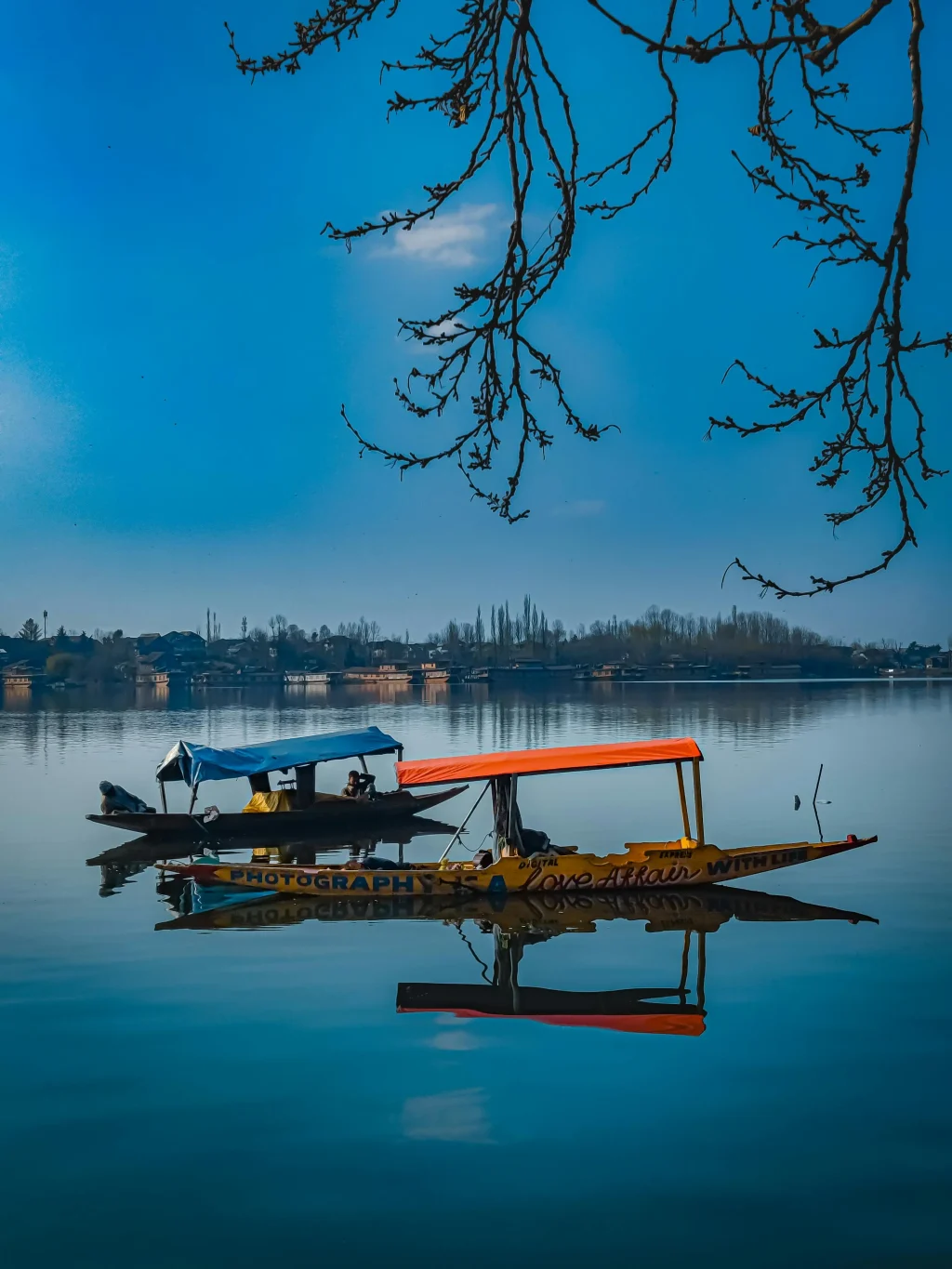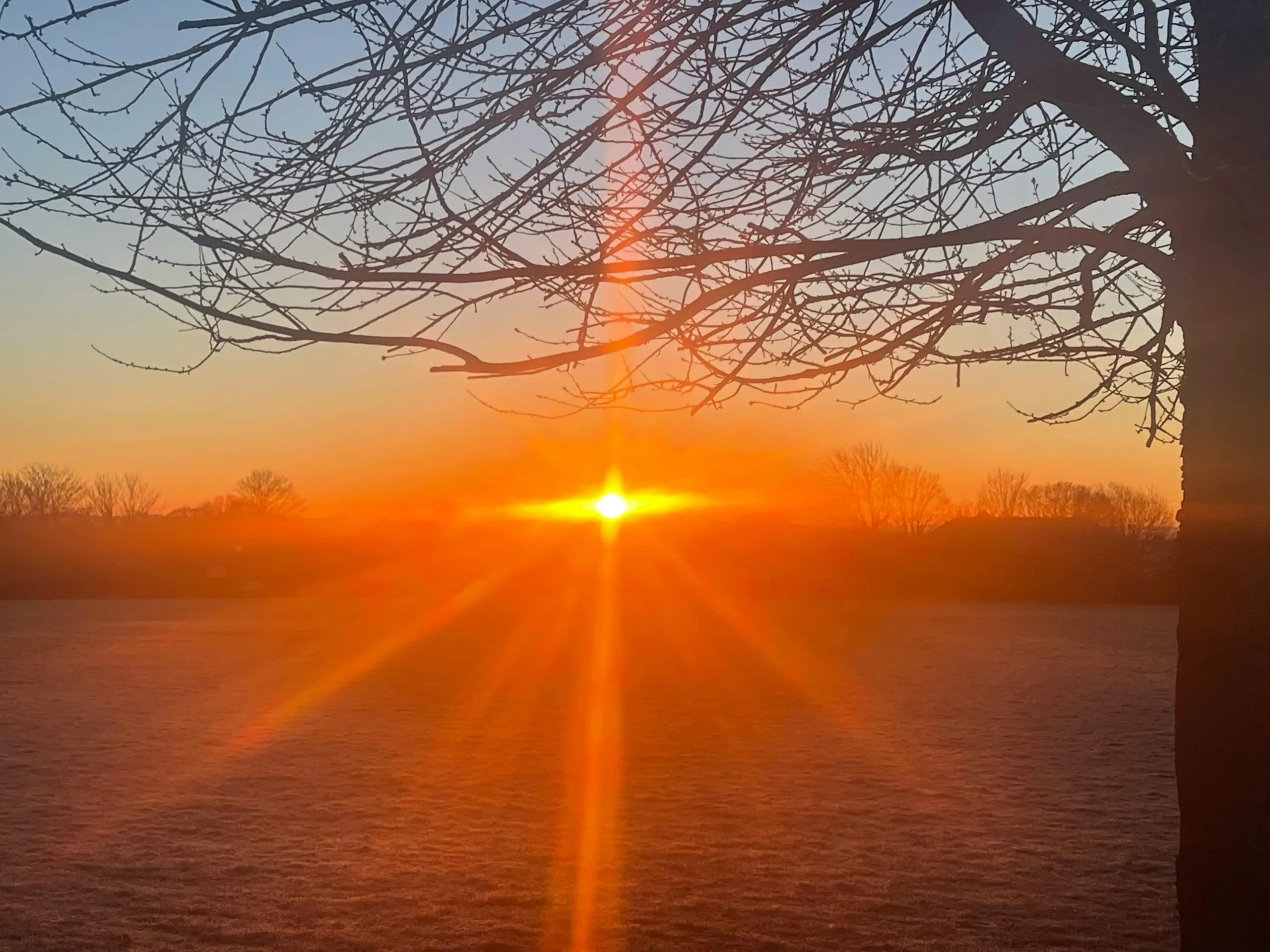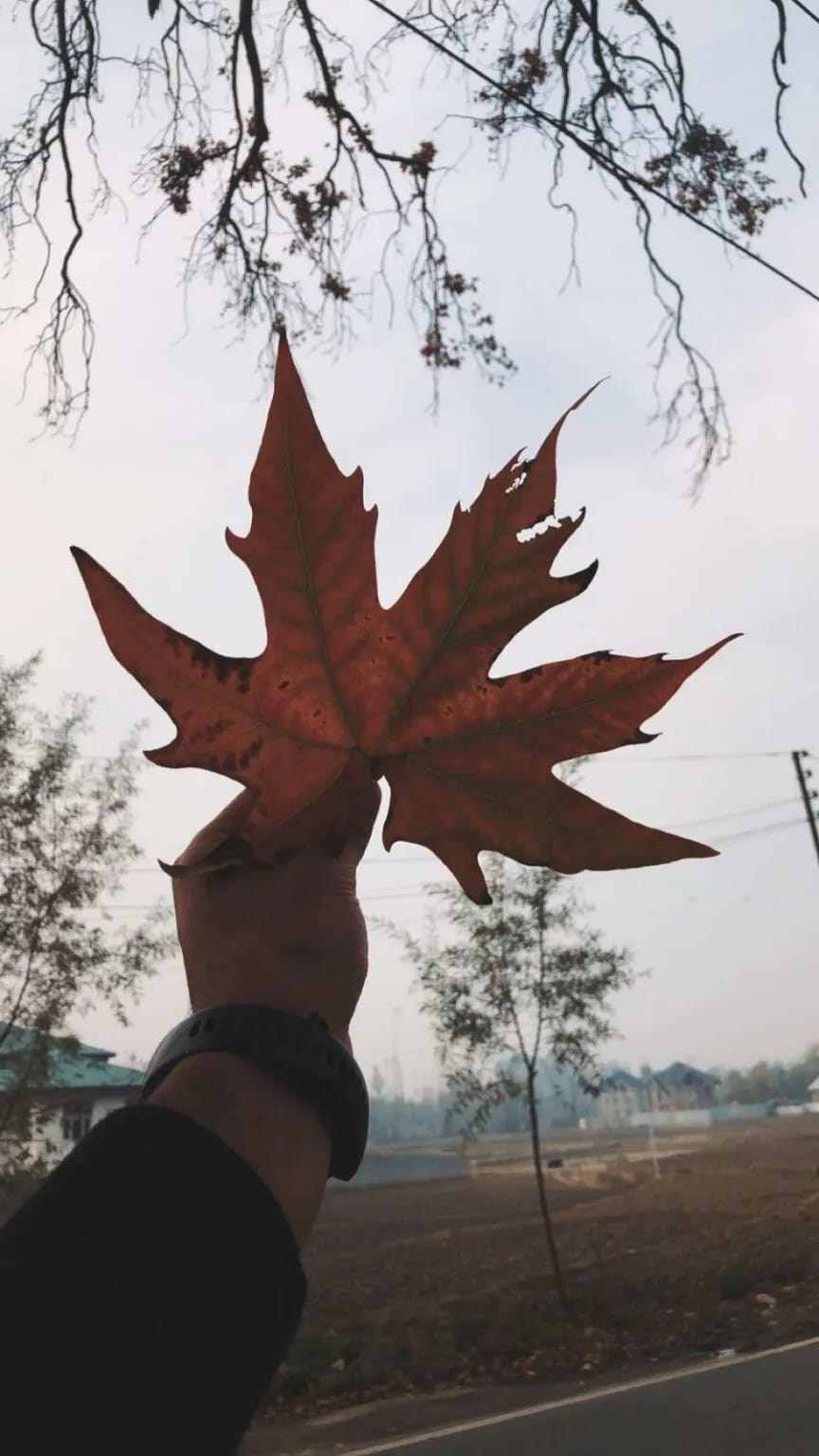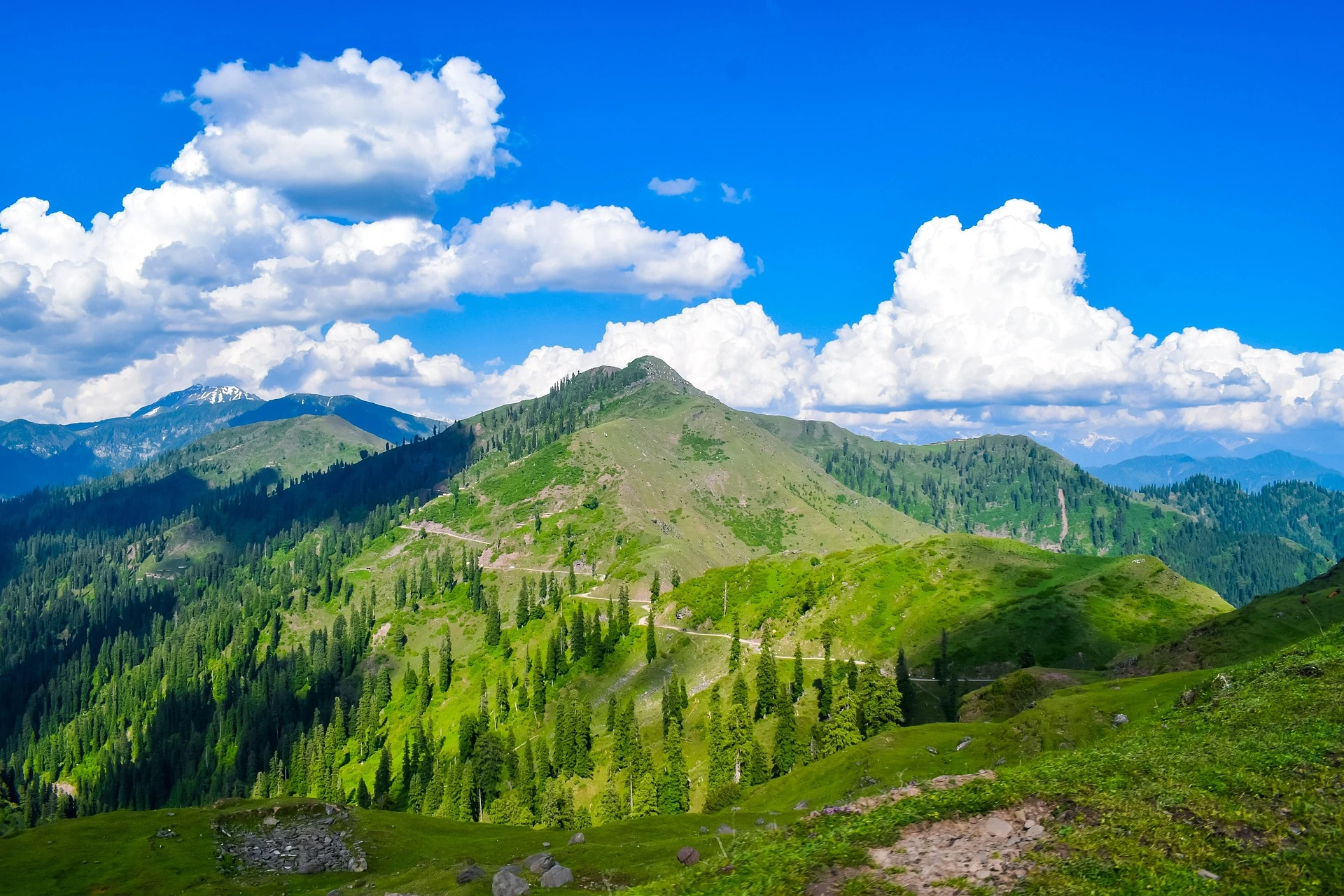Srinagar kashmir tourism reverberates a quiet kind of beauty as the Sun rises above the city and the floating market begins to bustle through the glassy surface of Dal Lake. Here the morning doesn’t start with an alarm but with the scent of saffron tea drifting through the walls of the wooden houseboat.
The mixture of nature, culture, and hospitality makes the experience of srinagar kashmir tourism an exceptional experience. From snow-covered peaks and blooming gardens to fully packed bazaars (markets) and timeless shrines, every corner of srinagar carries a story.
In this blog, discover why Srinagar is not just a destination but an emotion. We’ll take you through top attractions, hidden gems, seasonal experiences, and local tips to help you explore this magical city like never before.
Why Srinagar Is More Than a Tourist Spot
Srinagar isn’t just a place that offers only sightseeing and exploring the city, but a soul-touching experience. Every stone in Srinagar has a story, whether whispered through ancient shrines and Mughal gardens. Daily life here is full of nature, culture, and tradition.
Srinagar is unforgettable for sights, smells (of saffron and spice), sounds (of azaan echoing across the lake), and feeling (the crispness of the mountain air).
Iconic Places That Define Srinagar Kashmir Tourism
Dal Lake: The Soul of the Srinagar Kashmir Tourism
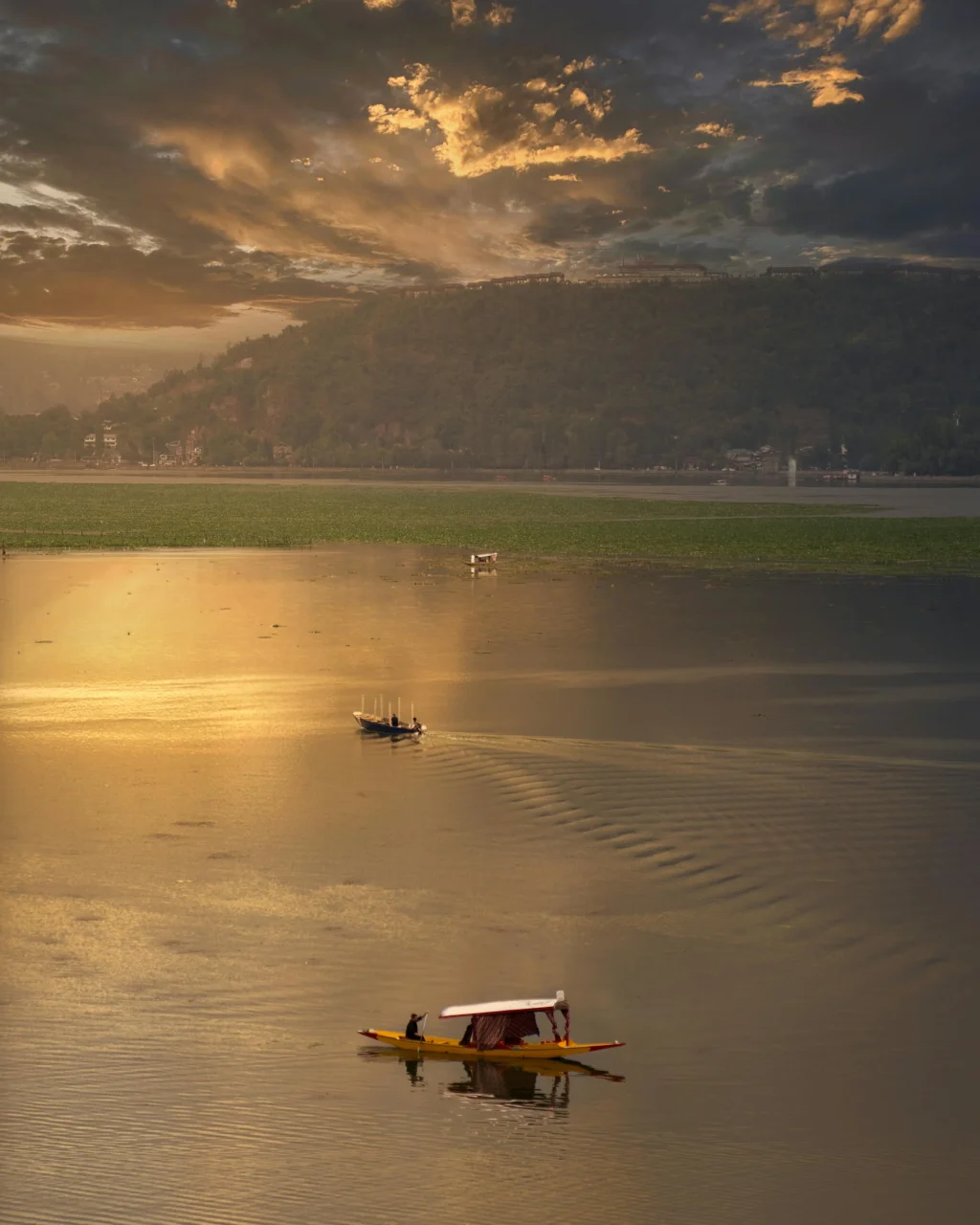
The Dal Lake is more than simply a water body; it’s the heart of Srinagar, where culture and tradition float, accompanied by the wooden shikaras. Mornings begin with the paddling boatmen and the vibrant hustle of floating vegetable markets, while evenings end with a walk round the boulevard road.
Shikara rides, particularly at sunrise or sunset, provide more than just a view; they also provide serenity and a sense of timelessness. It is the most photographed and adored spot in Kashmir because of the lotus gardens, the mirrored views of snow-capped peaks, and the allure of traditional houseboats with elaborate walnut wood carvings.
Mughal Gardens: Legacy of Emperors
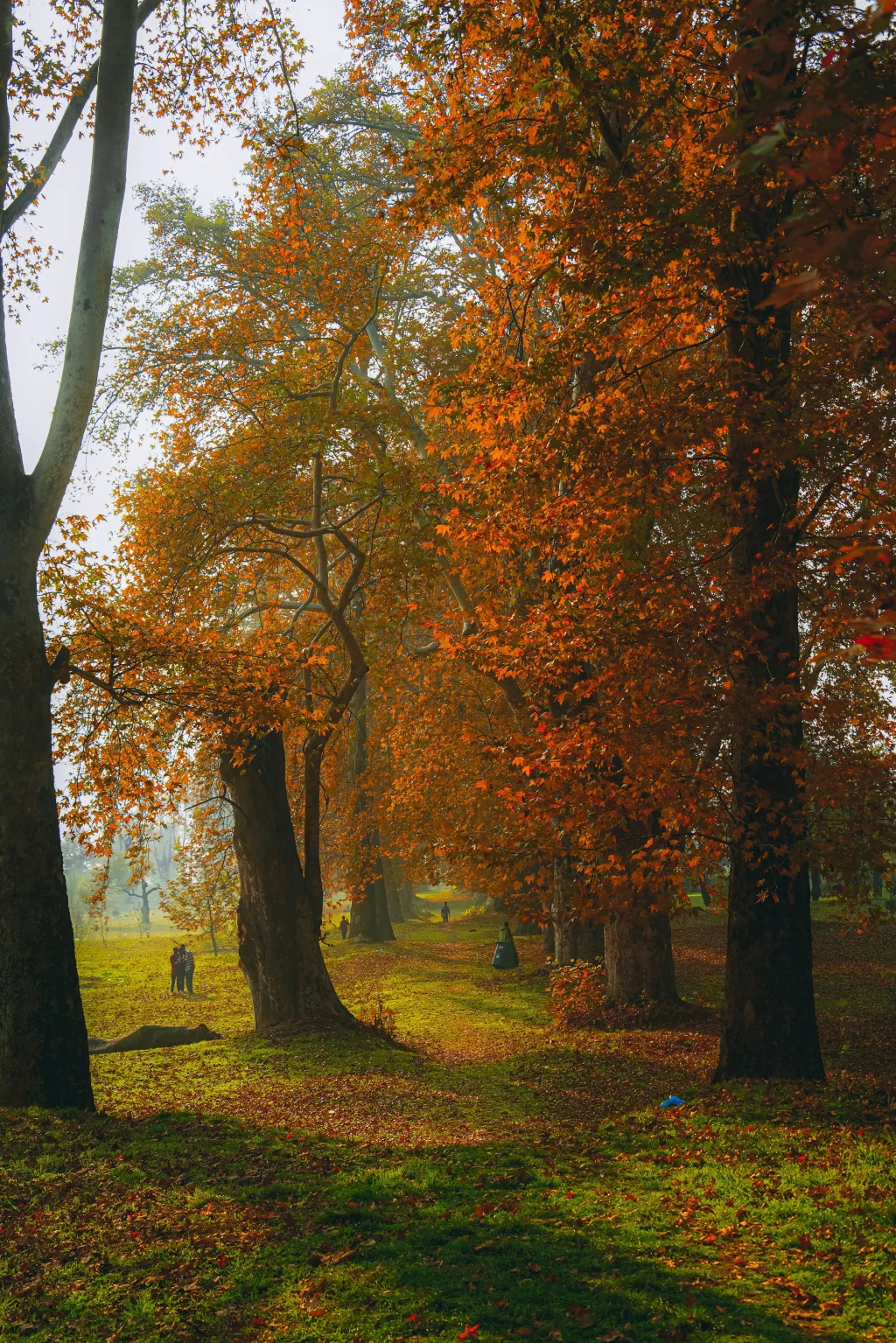
The Mughal emperors left behind more than history—they gifted Srinagar living masterpieces in the form of gardens. Walk through Nishat Bagh or Shalimar Bagh, and you’ll find rows of chinar trees, fountains flowing through stone channels, and tiered terraces blooming with flowers in spring.
These mughal gardens are a blend of Persian design and local beauty, especially when they are magical during April and October when flowers burst in bloom or leaves glow crimson and gold. Every step here feels like a stroll through poetry written in stone, water, and petals.
Hazratbal Shrine: A Sacred Reflection of Srinagar Kashmir Tourism
White, calm, and tranquil, Hazratbal Shrine quietly rests by the lake and reflects itself both in the water and in the hearts of the people. It is the most sacred Muslim shrine in Kashmir, housing a relic believed to be the hair of Prophet Muhammad (Peace Be Upon Him).
But even without religious beliefs, the idyllic tranquillity, the nearby sound of water lapping, and the widespread silence of the visitors make this shrine a place to stop and reflect. The Fridays have a specific purpose: spiritual gatherings offer an insight into the soulful pulse of a local life of faith.
The nearby campus of Kashmir University, one of the Top Universities in kashmir adds more value to the place.
Shankaracharya Temple: A View from the Top

Perched on a hill overlooking the entire city, Shankaracharya Temple offers not just spiritual peace but also a panoramic view that stays etched in memory.
Climbing the stairs is a small effort for the reward: a 360-degree view of Dal Lake, Zabarwan Mountains, and the rooftops of Srinagar blending into the landscape. The temple, dedicated to Lord Shiva, is also one of the oldest shrines in Kashmir, adding a historic touch to this peaceful summit.
Local Bazaars: Colorful Chaos & Craftsmanship
If you really want to feel the pulse of Srinagar, go where locals bargain, laugh, and live—its vibrant markets. In places like Lal Chowk, Zaina Kadal, and Residency Road, tradition lingers on each shop window and breezes through each wooden beam.
Here, you can find luxurious pashmina shawls, richly detailed Kashmiri carpets, hand-carved walnut woodwork, saffron strands, and dried apricots—all stories wrapped in silk, spice, and centuries of skill. The warmth of the shopkeepers often turns a simple purchase into a cultural conversation.
Hidden Gems of Srinagar Kashmir Tourism
When it comes to Srinagar, most travelers stick to the highlights — Dal Lake, Mughal Gardens, and Lal Chowk. But ask any local, and they’ll tell you: the soul of Srinagar lives in the places that only locals know about. Tucked behind hills, down narrow alleys, or past quiet water trails are some of the city’s most enchanting secrets.
Shrunz Waterfall—Where Silence Speaks

Just a short drive from the city, located in District Baramulla, Shrunz Waterfall is a place that even some locals guard like a secret. Hidden behind dense pine forests and moss-covered rocks, the waterfall cascades into a serene pool with not a tourist in sight. It’s a perfect place to pause, breathe, and feel the wilderness embrace you. Early morning is the best time to visit, when sunlight flickers through trees like a blessing.
If you want to take a break from the loud traffic noises and busy streets, then this is the place for you.
Zabarwan Sunrise Trail—A Walk through the Clouds
If you wake early and crave quiet, take a gentle trek up the Zabarwan Hills, located in the east. The trek starts near Pari Mahal and passes through wildflowers and chirping Himalayan birds. As you reach the ridge, the city of Srinagar lies below you like a painting—Dal Lake glowing gold, the rooftops still dreaming, and the mountains catching the first kiss of sunlight. It’s one of those moments where time feels suspended.
The Alleys of Old Srinagar—Stories in Every Stone
Past the bustling city center, Downtown Srinagar, or Shahr-e-Khaas as the locals call it, is a maze of tightly fit alleys, old brick homes with wooden balconies, and centuries-old walls that have seen the History of Kashmir. Jamia Masjid resides here, not just as a monument but as the lifeblood of the area. Walk around early morning, and you’ll pass kandurwans (bakeries) making tsot bread, the smells so familiar you may forget that you’re a tourist.
Rainawari Canals—Srinagar’s Quiet Venice
The sleepy area of Rainawari in Srinagar hides a secret network of canals. Narrow waterways that have transported countless wooden boats with goods (and gossip) over their shelving bridges are abandoned. But still allow you some leisurely explorations of the past with a boat or a walk along the canals. You will notice the carved wooden windows of houses, neighbors sharing steaming Kehwa or nun chai (salt tea) from one home to the next, and the gentle chaotic beauty of life moving without hurry.
Best Time to Explore Srinagar (Seasonal Breakdown)
Srinagar assumes a different color with every new season, and each season tells a different story. Come to see a tulip garden at peak bloom, or see snow falling over a lake; either way, you are guaranteed something beautiful.
Spring (March to May):
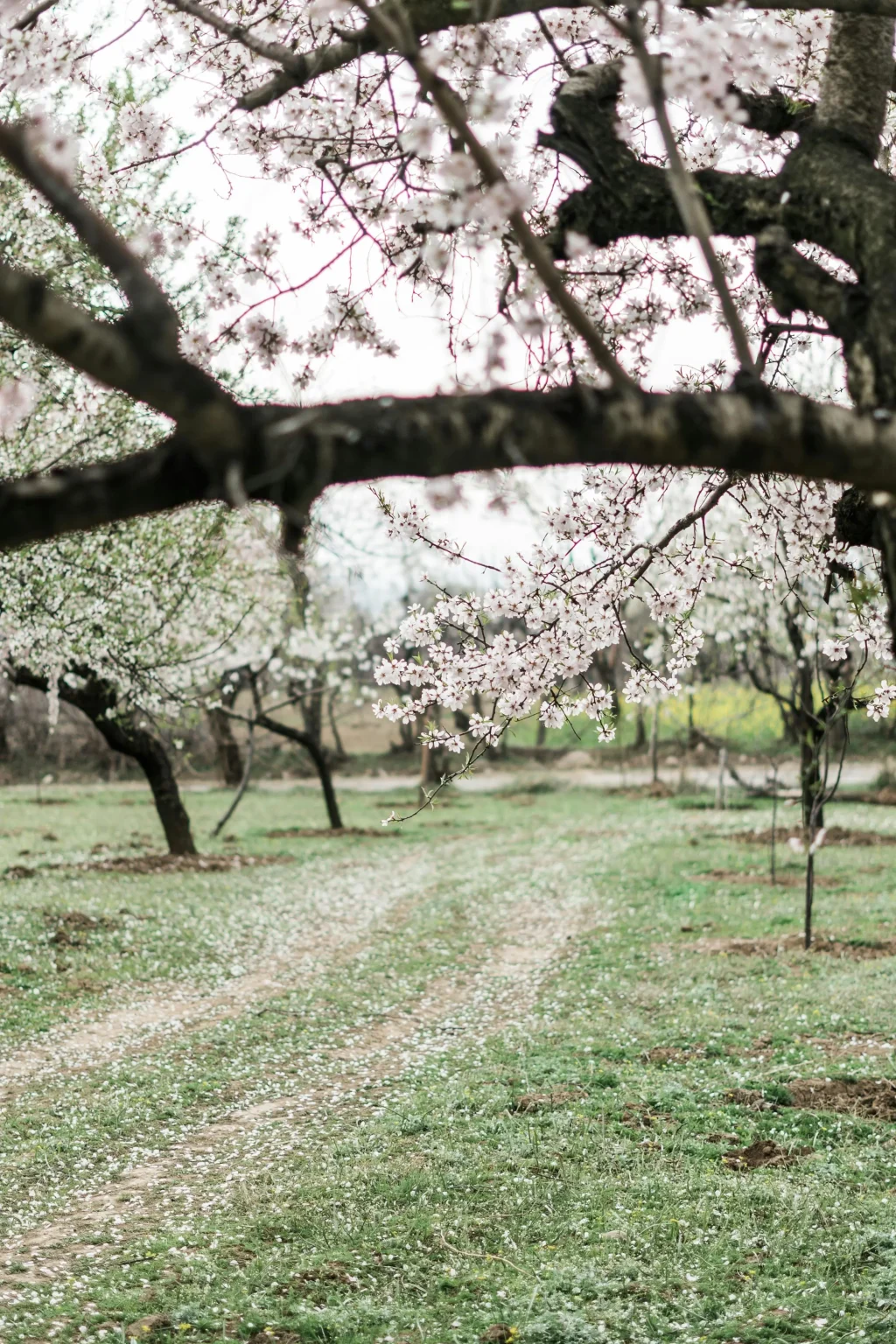
In Srinagar, spring feels like the city is awakening with a smile. Largest Indira Gandhi Tulip Garden in India bursts to life with the tulips, making it resemble a living rainbow at the base of the Zabarwan Hills. Blossom as if from a paintbrush adds almost childlike bursts of soft pink throughout our gardens and byways. Clean, fresh air fragrance settles in the warmth and ease of the weather. Everything comes together to create the most beautiful canvas for my Shikara rides, walking in the gardens, and all of my photography.
Tip: Visit in early April to catch the Tulip Festival, a visual feast you’ll never forget.
Summer (June to August): Life by the Lake
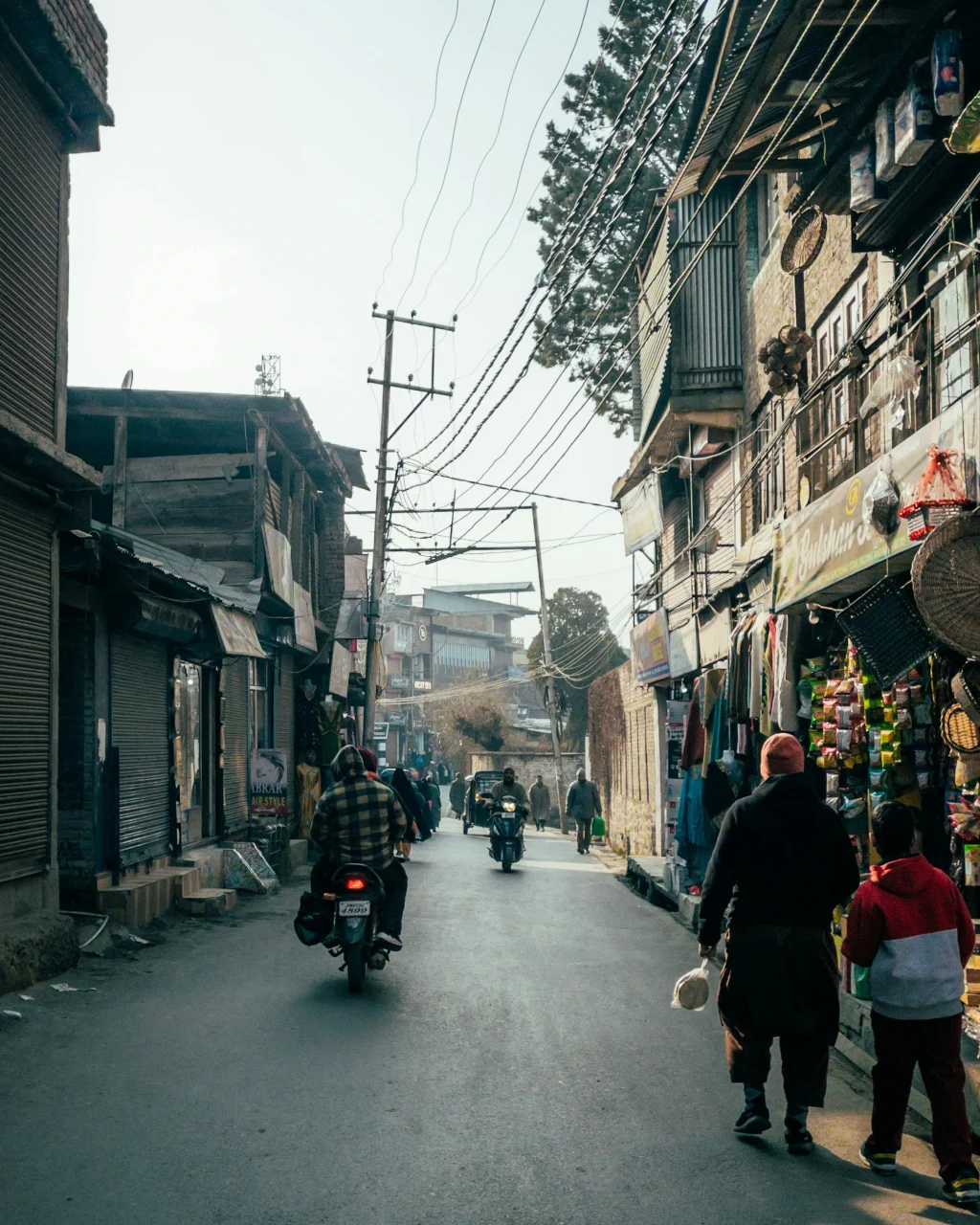
Srinagar summers have vibrancy yet tranquility, with warm days suitable for touring steps up gorgeous Mughal Gardens like Nishat and Shalimar. Dal Lake serves as a stage for floating markets, houseboats, and candlelit shikara rides! Just remember, there is something simultaneously unearthly and cosmopolitan about those candle lanterns too. At night the cool mountain breeze truly makes the houseboat stay dreamlike.
Tip: Pack light cotton clothes for the day but carry a light jacket for cool evenings.
Autumn (September to November): The Golden Hour

This is when Srinagar becomes poetic. The famous Chinar trees take on shades of orange, red, and gold—causing every street to look like a work of art. Places like Naseem Bagh are irresistible to leaf lovers and photographers. The weather is cool, and the morning fog lends an air of fascination to the city.
Tip: Visit Kashmir University’s campus or take a walk by the Jhelum River for the most scenic autumn shots.
Winter (December to February): A Snow-Kissed Paradise
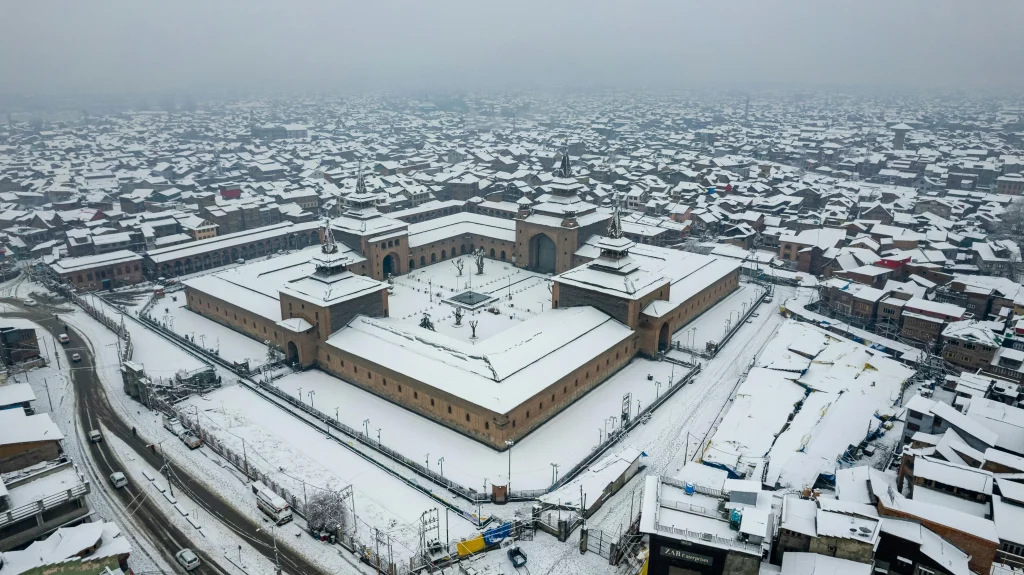
In the winter, Srinagar becomes a silent world, transformed by the snow. The rooftops, the trees, and even the lakeside ghats get a warming blanket of snow. Be it from the warmth of a pheran while drinking kehwa or looking out on your houseboat to see the flakes fall, one can sense the serenity. Additionally, it’s the best opportunity to enjoy this time of year and visit Gulmarg for skiing or snowboarding while visiting Srinagar.
Tip: Visit early December for lighter snow and better road access; January if you want a full snowy experience.
Local Experiences That Add Soul to Your Journey
Srinagar is not simply a place to see; it is a place to feel. The tempo of life is lazy, sensuous, and steeped in culture. These regional events bring you closer to the true essence of the city.
Sip Kehwa in a Traditional Kashmiri Home
Sipping warm, saffron-infused kehwa from a Samovar (traditional tea kettle) while sitting cross-legged on a carpeted floor is simply magical. It’s not just a drink; it’s the most pure, welcoming hospitality imaginable — an unspoken invitation into someone’s life.
Try this in downtown Srinagar or during a homestay experience.
Early Morning Shikara Ride with Floating Market Views
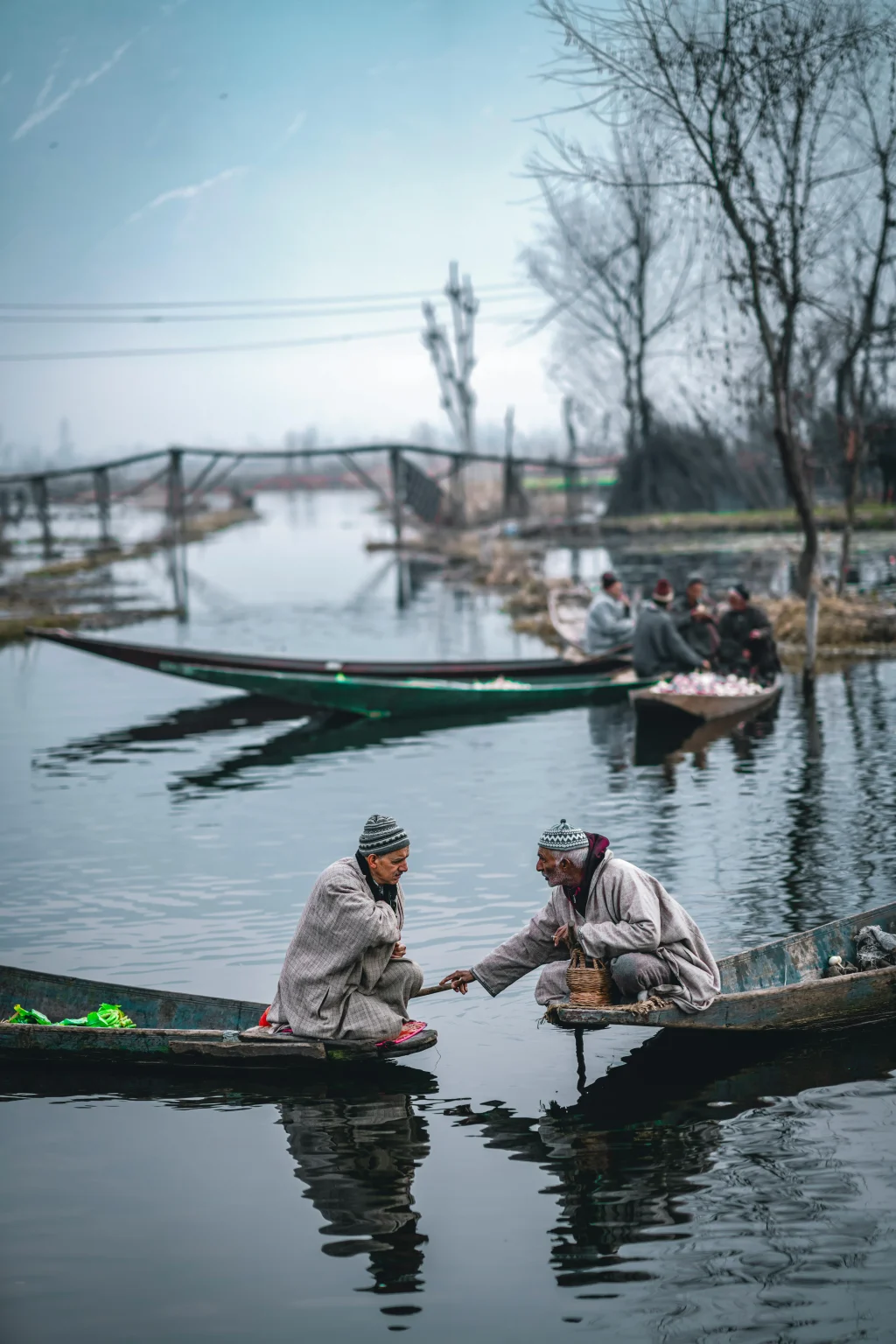
Rise before dawn and quietly traverse the fog-covered Dal Lake to witness some local vendors selling fresh vegetables, flowers, and, in some instances, bakery items all out of a boat. The silence, the mountains’ reflection on the water, and the hustle are deeply memorable and a once-in-a-lifetime memory.
Tip: Reach the lake around 6 AM to witness the full charm of the floating market.
Watch Local Artisans Weave Magic
Srinagar’s craftsmanship, from hand-knotted carpets to fluttery pashmina shawls, is on par with those in the world. You can visit a local workshop where artisan after artisan darts along, watching hands dance to fold wool into heritage. You will never look at fabric in the same way again.
Tip: Ask about the story behind the design — most patterns carry deep cultural meaning.
Join Evening Prayers at a Wooden Mosque
Step inside Jamia Masjid in Nowhatta at the evening azaan. There are 300-year-old wooden pillars letting in light as soft prayers drift in the air. Regardless of your faith, it will be a peaceful and spiritual experience.
Tips for a Smooth & Respectful Visit
The experience of traveling to Srinagar is made that much more enriching if you travel with thoughtfulness and mindfulness. Here are a few tips to help you fit in, show consideration, and have an easier time:
Dress Modestly
Kashmir and its people are conservative, especially in rural and religious areas. Trying to dress modestly (covered shoulders, full-length pants or skirt) will show respect and help you connect to the locals much easier.
Be Mindful Around Religious Places
Shoes off when entering shrines and mosques. Before taking photos, please ask—many worshippers prefer privacy, and many places won’t allow cameras.
Ask Before Clicking
Kashmiris are friendly but private. Always ask for portraits, especially of women or elders. A cordial smile and gesture will always work for you.
Learn a Few Local Words
A simple “Asalamualaikum” (respectful greetings) or “Shukriya” (formal thank you) will put a genuine smile on faces and sometimes spark conversations.
Support Local
Stay at lodgings that are locally run, purchase handcrafted items, and eat locally in family-owned establishments. Your money will go to the community and keep traditional arts alive.
Travel with Sensitivity
Kashmir has a complicated political backstory. Avoid discussing controversial issues in conversation and instead concentrate on the locals, customs, and nature.
A City That Leaves You with Stories, Not Just Photos
Srinagar isn’t a place that you cross off a list — it’s a feeling that you carry back home long after you’ve left. For example, it’s the warmth of sharing kehwa with a houseboat proprietor, watching snowflakes land on Chinar leaves, listening to an elder’s stories while envisioning his past, bathing in Srinagar’s beauty, or admiring the congeniality of a certain people beside a shrine; in each situation, words fail to express or capture that moment. You infuse those experiences into a lasting memory attached to Srinagar that will stick with you for a while.
This city doesn’t just offer sights or views; it offers soul. It teaches stillness on Dal Lake, color in floating markets, and warmth in people who are just strangers to you.
If you’re ready to explore more than just landscapes — if you want to feel, listen, and live Kashmir in the best way possible — then let Kashmir Whispers be your storyteller and travel companion.
Explore Srinagar with us. Let the stories find you.
Also, check out our other travel blogs.

